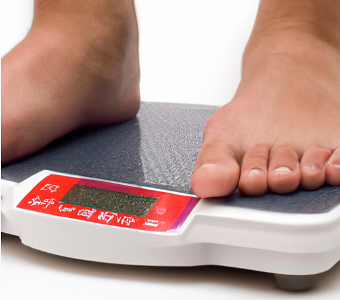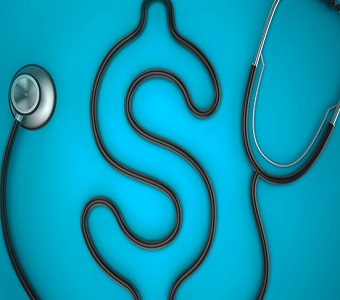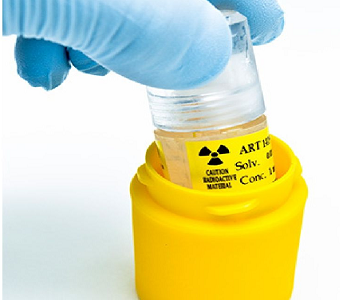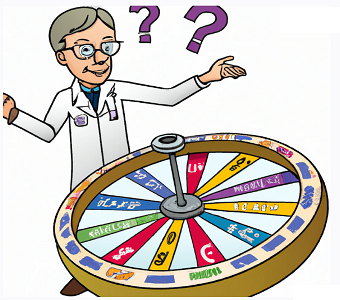In November of 2011, Gilead announced that it reached an agreement to purchase Pharmasset for $11 billion, an 89% premium to its previous close. CEO John Martin noted, “the acquisition of Pharmasset represents an important and exciting opportunity to accelerate Gilead’s effort to change the treatment paradigm for HCV-infected patients by developing all-oral regimens for the treatment of the disease regardless of viral genotype.” This purchase has been debated as either a transformative moment for Gilead as it successfully expands beyond its core HIV franchise, or an overpriced bet on an overhyped hepatitis-C (HCV) market.
One of the most common ways to determine whether Gilead overpaid or was prescient in its purchase is to model the expected hepatitis-C market and determine how much Gilead will capture to generate a net present value (NPV). If the NPV of Gilead’s profits from the future hepatitis-C market are above what they paid, then it was a good deal; if it is below, then they overpaid. It should be noted that a NPV of $11 billion requires close to $31 billion in net profits over the 19 years of patent life. While that might seem like a great return, it is only about a 5.7% annual return (essentially the same return as buying $11 billion worth of shares in Kinder Morgan Energy Partners, with dividends reinvested). Calculating the NPV for such a long period of time is difficult, as the entrance of more effective drugs is expected to alter the market and grow it in ways that are currently unknown. For instance, some market research shows that the hepatitis-C market was $4.7 billion in 2010 and will grow to $8.6 billion in 2017, whereas others have the market peaking at $16.5 billion. The large variance in estimates is likely unrelated to the lack of detailed analysis, but reflects the sheer number of assumptions that one has to make in modeling this market so far into the future. So how does one judge Gilead’s investment given the broad variance?
One solution is to figure out what the market would need to look like in order for the NPV in 2011 to equal $11 billion. In other words, instead of modeling the hepatitis-C market and Gilead’s position within it to generate an NPV, why not figure out what the future hepatitis-C would need to look like in order to make the Pharmasset purchase economical? This still requires a large set of assumptions, but arguably fewer than the other method. To make this analysis as beneficial to Gilead as possible, I am modeling out to 2029 (the patent expiration) and only using a 10% yearly discount for NPV. In addition, I am assuming a 30% net profit margin, which is slightly higher than Gilead’s currently reported 27%. Finally, I estimate that Gilead’s product hits the market in 2014 and reaches peak sales in 2016 (2014 will be a third of peak sales and 2015 will be two-thirds of peak sales) and that it will maintain those peak sales levels until patent expiration in 2029.
These assumption are quite favorable for Gilead (especially assuming they will get peak sales for 13 years), which is fine for the first cut of the modeling. So the question with those assumptions is, what would peak sales need to be in 2016 through 2029 (with the ramp in 2014 and 2015) for the NPV of that cash flow to equal $11 billion in 2011? $7 billion/year in hepatitis-C revenues from 2016 through 2029. If one assumes the $8.6 billion total hepatitis-C market in 2017, then Gilead would need 81% of the market, and even with the larger estimated $16.5 billion market, it would still require a 42% share. If the hepatitis-C market ends up lower than $7 billion/year, there is no way in which the 2011 NPV is above $11 billion.
Of course, some might argue that this is too pessimistic for Gilead and that their margins would be closer to 40%. If one increases the net profit margin to 40%, then it still requires $5.2 billion in hepatitis-C revenues from 2016 to 2029. The most unrealistic assumption of the analysis, however, is not the net profit margins but the stable market for the 13 years between 2016 and 2029. These hepatitis-C drugs are cures, so each treated patient shrinks the addressable market. As such, one would expect a declining market at some point as the number of cured individuals increases. If one alters the assumptions such that starting in 2019 the market decreases by 5%/year until 2029, then Gilead needs peak sales of $8 billion (which is almost 100% of some market estimates). In other words, even modeling a small decline in the market makes it quite difficult for the 2011 NPV to be above $11 billion. In general, for each 5%/year decline in market that one models, it increases the needed peak sales by $1 billion. For instance, assuming a 10% decline from 2019 onward means that Gilead would need $9 billion in peak sales starting in 2016 (15% decline means $10 billion in sales and so on).
Regardless of the assumptions, it seems clear that Gilead requires either a near-complete share of a moderate hepatitis-C market or a dominant share of an exceptionally large hepatitis-C market. Are either of these situations likely, or even possible? For instance, is the $16.5 billion hepatitis-C market reasonable? The short answer is no, and in fact, it seems that this is the case for structural reasons. Looking at the number of individuals in the United States that are infected with hepatitis-C (estimated at 3.2 million), the market looks huge. Of course, a significant portion of those with chronic infection are unaware of their status (estimates are that only 5% to 50% know they are infected). Even taking the mid-point of that range, there are likely 800,000 individuals in the United States that know they are infected with chronic hepatitis-C. The only way to significantly grow that number is through routine screening of the population, but this is unlikely, as studies (this study as well) have recommended against routine screening of the population for hepatitis-C (high risk is a different case).
If we take the 800,000 known cases in the United States and assume that the EU and Japan will add another 1.2 million, then the developed markets have about 2 million treatable patients. While there has been no guidance, costs of current branded treatments range between $31,000 to $53,000 and perhaps Gilead can charge a premium price of $60,000. This creates a total market of $120 billion, and if that is equally divided among the 13 years of peak sales between 2016 and 2019 that gives roughly $9.2 billion a year. As such, given the number of people with known infections it seems unlikely that the hepatitis-C market could reasonably stay above $10 billion a year let alone reach the high estimates of $16.5 billion. Of course, there are markets outside of the United States, Europe, and Japan but if we include those in our estimates, one would have to lower the price and margin estimates. The only reasonable way to get to the larger numbers (outside of assuming a large penetration into developing markets with developed market pricing) is through large-scale testing. While possible, the studies noted above indicate that it is not cost effective and not immediately apparent how this would happen or who would pay for it. To be clear, it is not the case that these large market estimates are impossible, but simply not as assured as it might appear.
The other major concern with the hepatitis-C market is pricing. In general, the individuals who are most at risk for hepatitis-C infection are intravenous drug users (IDU) and prisoners. It has been estimated that 1.5 million IDU are infected with the hepatitis-C virus, 46% of the 3.2 million cases in the United States (there are other estimates that IDU account for 60% of cases in the United States). While the number of infected prisoners is unclear, the rate of infection is much higher (estimates that it could be 10X to 30X higher) than the general population. Clearly, there is going to be an overlap between IDU and prisoners, but it is reasonable to assume that these two groups make up the majority of the market in the United States.
Even if a large portion of hepatitis-C infected individuals are IDU or prisoners, why does this matter? The key is that this is a portion of the population that has less access to health care and a more limited ability to pay for treatments. The department of corrections in Utah, for instance, notes that it spends $12,000 per HCV treatment (slide 5), and their discussion implies that this a major burden. How, then, would prisoners (or the state) be able to pay a premium price like $50,000 to $60,000? Or to phrase it differently, would the prison system (and by extension the taxpayer) be willing to foot such a high bill? Unlikely. Outside the prison, it is certainly the case that some IDU patients would have access to affordable healthcare, but it seems like a questionable assumption to model all of these cases at premium prices. As such, there are structural issues with the HCV market in that it is large in terms of chronic infections, but the treatable patient population is much smaller (given that most do not know they are infected), and it is unclear if a large portion of the treatable population could even afford premium pricing. This is even ignoring the possibility that current treatments like Incivek (marketed by Vertex) are already curing those patients who have the best access to healthcare, which will make it more difficult for Gilead and others to penetrate the market. The implication is that the high end numbers for the hepatitis-C market might be based on questionable assumptions about both size and pricing.
If Gilead cannot rely on a $16.5 billion yearly market, then in order to make returns on its investment it needs to have a dominant position in a smaller market. While it is outside the scope of this article to analyze all of the drugs in development, it is clear that Gilead competitors are quickly closing the gap. For instance, Abbott (NYSE:ABT) recently showed that its drug cleared well over 90% of infected individuals and Bristol-Myers Squibb (NYSE:BMY) has also produce positive results. In addition, Vertex (NASDAQ:VRTX) announced a series of new collaborations with Janssen and GlaxoSmithKline (NYSE:GSK) to develop an all-oral treatment, and Achillion (NASDAQ:ACHN) continues to make progress with its candidates. While there is still a lot of data that needs to be generated, the question is whether one can assume that Gilead will have dominant position in the market, even with a significant number of companies developing therapeutic options with potentially similar efficacy profiles. Again, it is certainly possible, but one has to assume that they have the dominant position in order to have an NPV over $11 billion.
In general, it seems unlikely that the hepatitis-C market will develop in a way that makes the Gilead purchase of Pharmasset profitable from a Net Present Value perspective. Of course, as I have noted all along, any analysis requires a large number of assumptions, and it is certainly possible that the market is larger than expected and/or Gilead gets a dominant position despite the competition. If that is the case, then the purchase is a bargain. The bigger point, however, is that no one knows how the market will develop three years from now, let alone five or ten. Minor changes in these assumptions can have dramatic effects on the NPV. This is precisely why I examined different views of the market, as well as what I consider most likely. When there are so many assumptions, and one is modeling so far into the future, it is probably a good rule of thumb to think in terms of variance in outcomes than point estimates. In other words, think about the range of possibilities as opposed to locking onto one estimate. Looking at a range of possibilities for the future hepatitis-C market demonstrates that there are many more situations that show Gilead overpaying than show Gilead getting a bargain. The Pharmasset purchase seems priced for the ideal hepatitis-C market, and it is much more likely that the future market will be less than ideal.




